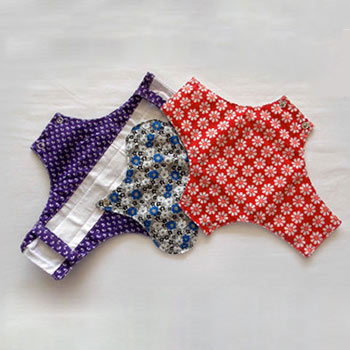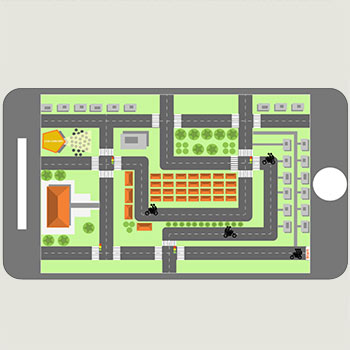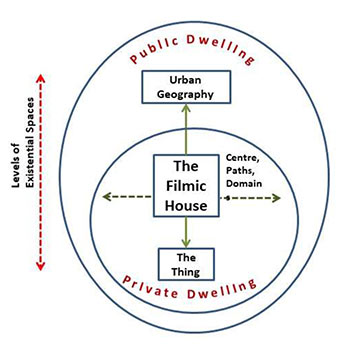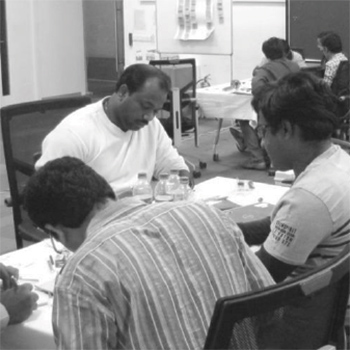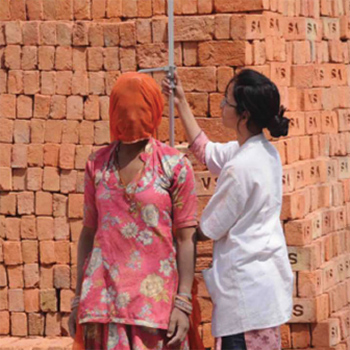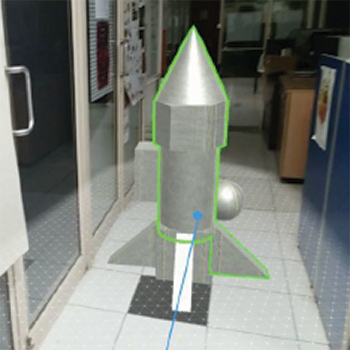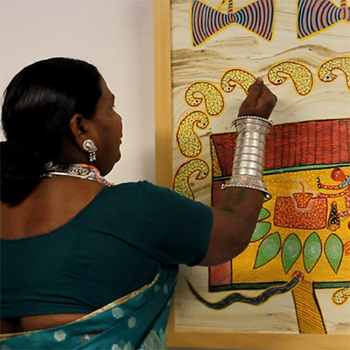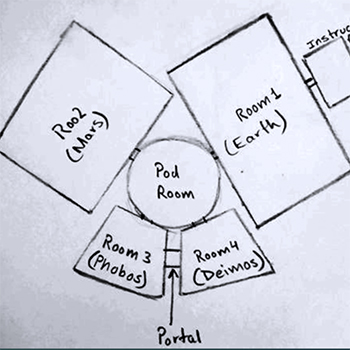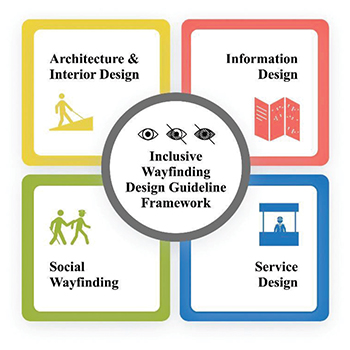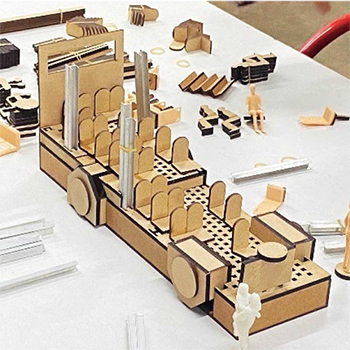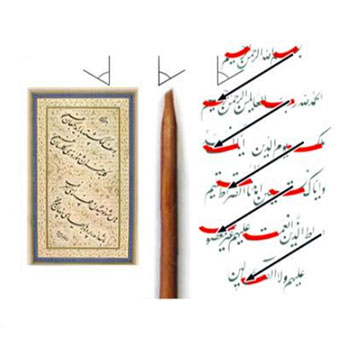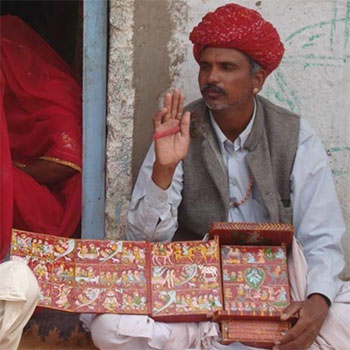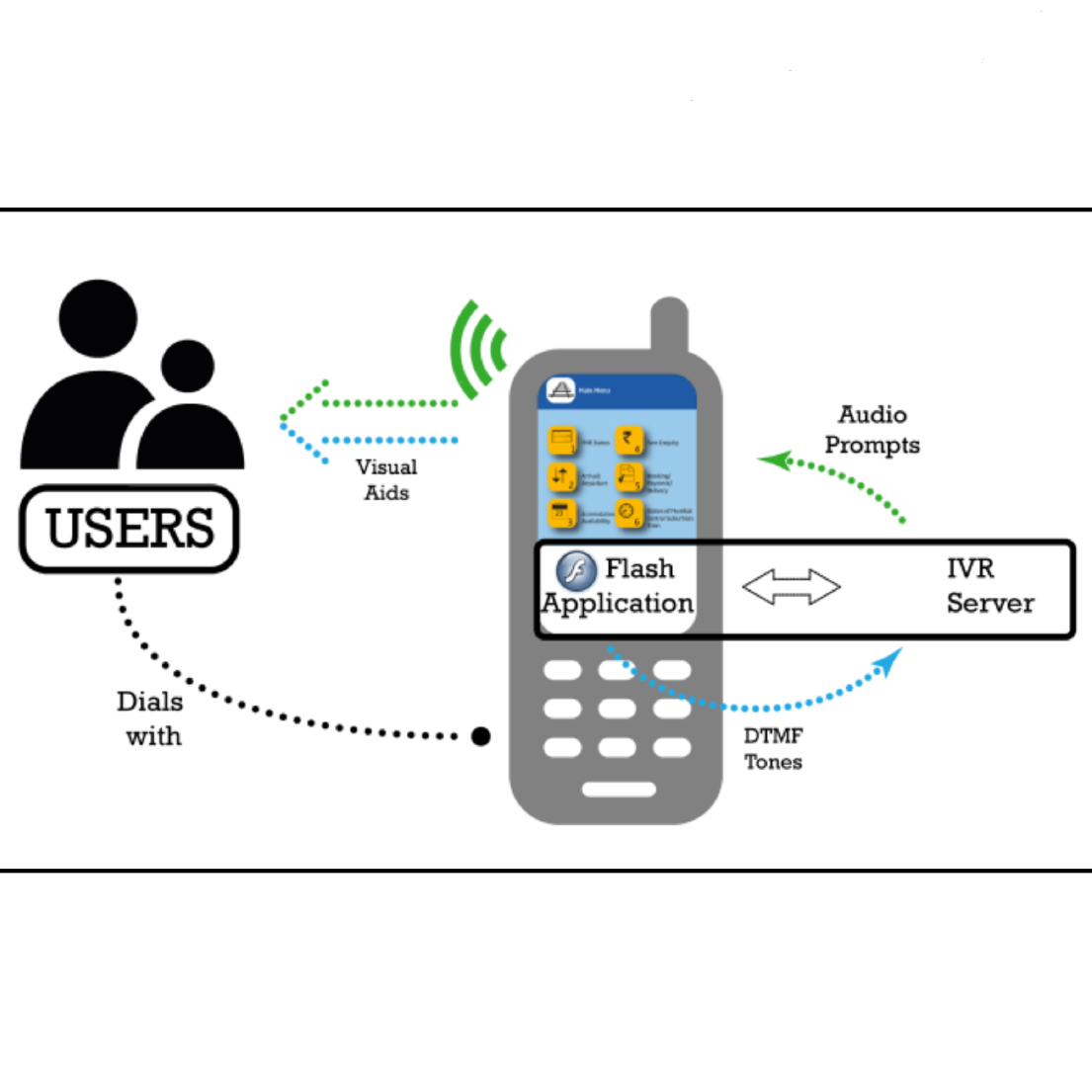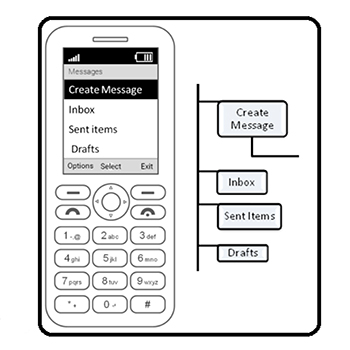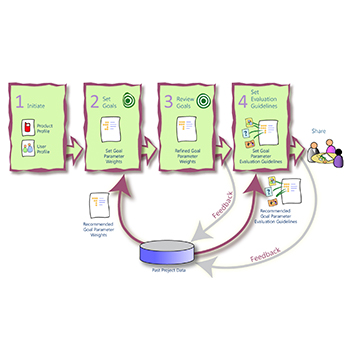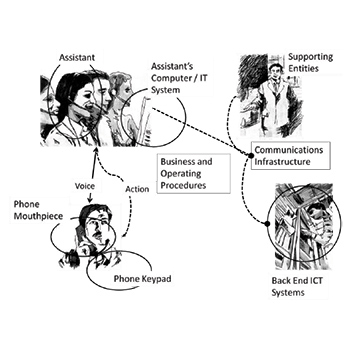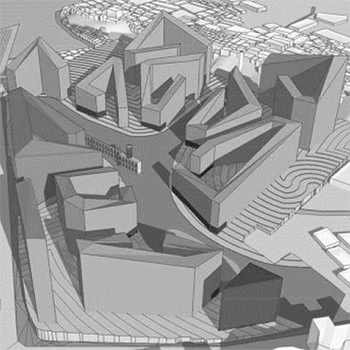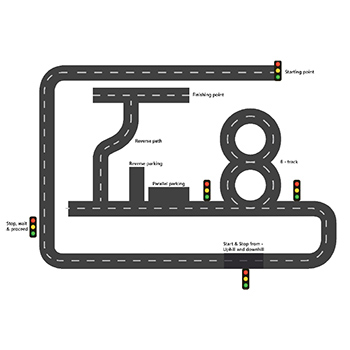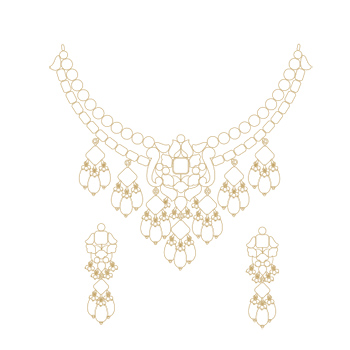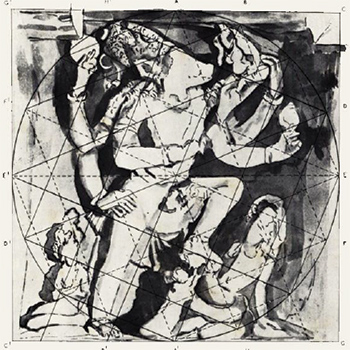Thesis
2019-onwards
(15 items)
by Indrani De Parker; supervisor/s: Prof. Raja Mohanty
by Lakshmi Murthy; supervisor/s: Prof. Anirudha Joshi
(a) Sustainability
(b) Social Change
(c) Participatory Social design
(d) Action research.
We explored the research questions through experiments, cross over trials, studies and personal communication with stakeholders, while considering three products, namely TP, DSNs and Uger. This thesis proposes two tools for sustainable menstruation management for rural communities. The first tool called PASS is an assessment tool that can be used to score and compare systems for sustainable menstruation management. The second tool, Uger pads, is a tool for managing menstrual discharge in a sustainable way. This thesis, by proposing these two tools, lays out multiple possibilities for future sustainable interventions for menstruation management.
by Purba Joshi; supervisor/s: Prof. B. K. Chakravarthy
by Sandeep Athavale; supervisor/s: Prof. Girish Dalvi
by Saurabh Singanapalli; supervisor/s: Prof. Nina Sabnani
by Smita Dalvi; supervisor/s: Prof. Nina Sabnani
by Sharmila Sinha; supervisor/s: Prof. B. K. Chakravarthy
The rapidly changing world scenario and its implications on social needs and behaviours in this new century have stirred the focus of organisations towards the fostering of new ideas. The phenomenon of idea generation has been studied in the field of cognitive psychology in order to better understand the workings of the mind. Substantial innovations often result from transferring solutions from one industry or domain to another by forming correspondence between elements of representation, creating a path for cross-transfer. Analogies possess the potential to juxtapose knowledge from one domain to another, following the principle of making "the strange familiar and the familiar strange" (Gorden, 1961).
In the creative field of design, expert designers often use analogies for strategic problem solving and new idea generation based on prior experiences (Dunber & Blanchettel 2001). Therefore, in the case of novice designers, inculcating this way of thinking can be a way to overcome linear, patterned thinking and expand the boundaries of creative exploration. This stems from the tendency to search for solutions that have previously shown results or search for results within an area of expertise to override the fear of failure. This has led most "design by analogy" studies to focus on data mining (Altshuller 1984) using computational support for big data management and retrieval. While studies reveal that analogy usage is pervasive in many disciplines, there are very few studies that show how and why novice product designers face challenges when using analogy for ideation.
by Amar Kundu; supervisor/s: Prof. Gaur G. Ray
India is the seventh-largest country by geographical area and the second-most populated country in the world. Almost ninety-four percent of the Indian workforce is working in the unorganised sector. Unorganized activities are labor-intensive, necessitating low-level skills and relying on age-old, primitive technologies that pose occupational hazards. Occupational stress can be divided into four major classes, such as physiological stress, postural stress, psychological stress, and environmental stress. The earlier research on the unorganised sector recommends ergonomic design interventions to improve workstation ergonomics. more ergonomic. Mechanization or automation in India, like in other developed countries, is prevalent. An unorganised sector is difficult. Therefore, it needs a context-specific, low-cost design. intervention from the viewpoints of sustainability, cost-effectiveness, and manpower employment, which can reduce occupational stress. It is essential to find out the most significant In the unorganised sector, there is a pain point for doing context-specific design interventions. Hence, the prioritisation of the most painful stress among all other occupational stresses is most important. A physiologically stressful job demands a high physical workload and needs to be redesigned to provide leverage or low-cost mechanization. The pastorally stressful job must be eliminated. change the working posture. The causes of psychologically stressful jobs must be discovered. psychological stress, reorganise the job, and improve the employer-employee relationship. For an environmentally stressful job, the working environment needs to be modified by the worker. acceptable limit. An environmental stressor can be managed at the source or in between the source and the subject (like using PPE).
The Minimum Wage Act, 1948, helps with the fixation and execution of minimum wages to prevent exploitation of labour through the payment of low wages. The minimum wage rate can be fixed at a) a time rate, b) a piece rate, c) a guaranteed time rate, and d) an overtime rate. The Indian Labour Conference (1957) had come up with a norm that should be considered during minimum wage fixation. Minimum wages in India's unorganised sector are set at 2700 calories per day. Ergonomics can validate unorganised workers' energy requirements. The minimum wage fixation committee considers four consumption units per earner. But in the Indian scenario, there are six consumption units per earner (worker, spouse, two kids, and parents). Social scientists must reconsider wage fixation norms in light of this.
by Pratiti Sarkar; supervisor/s: Prof. Jayesh S. Pillai
The Indian schools in Tier 2 and Tier 3 cities have technology-driven classrooms. However, learning subjects such as (but not limited to) mathematics, science, and history that include abstract concepts often becomes challenging for students due to the requirement of visualising skills, a lack of learner-content control, and frequent disengagement. This leads to the requirement of a student-centered technological pedagogical tool. According to recent research, Augmented Reality (AR) is one of the emerging technologies for student-centered learning that superimposes computer-generated virtual objects onto the real world in real time. Moreover, the ubiquity of mobile phones has led to increased integration of AR and mobile learning. In the context of Indian schools, this technology is still being explored and is yet to be added to the benefits of classroom teaching. Hence, there is a need to identify the ways in which AR technology can be designed and used in Indian schools to provide an interactive, immersive, and enhanced learning experience. To create such a classroom-based Augmented Reality Learning Experience (ARLE), the potential design strategies have to be identified and applied.
This dissertation advances our understanding of these problems in two ways: (1) to characterise the design strategies of an ARLE incorporating the three dimensions of learning, i.e., content, incentive, and interaction (Illeris, 2003), and (2) to apply the identified design strategies in creating an ARLE. We have used design-based research (DBR) as the overarching research approach to design and iterate on the potential solution. DBR is a research methodology that aims at the development of educational interventions or learning environments through iterative cycles of analysis and exploration, design and development, and evaluation and reflection. We carried out seven research studies (N = 235) using a mixed-method approach in two cycles of DBR.
by Debjani Mukherjee; supervisor/s: Prof. Mazhar Kamran & Prof. Disha Nawani
The artificial divide created by formal institutions such as schools makes us believe that learning primarily happens within the confined walls of a classroom. This assumption, besides certifying learning of a certain kind, inadvertently disowns learning practises in other informal contexts, past or present. The study endeavours to celebrate 'learning of an art form," which is perhaps more spontaneous, natural, and organic, with the intent to draw pedagogic insights that might be later adapted to informal and formal learning spaces as well. The choice of the Bhil artist community in India was deliberate and conscious, as it makes for an interesting case study where their artforms, which are in transition, reflect both continuity and discontinuity in their beliefs, relationship with art, and art practises from the past. On the one hand, their ritualistic Pithora artform is essentially traditional and confined within the community, and on the other, the Bhil art is also emerging as a commercial artform. This transition is comparatively recent and situates indigenous art in the present by addressing the dynamism and evolution of the art itself.
The research objective thus has two aspects: understanding the nature of the human-art relationship and the pedagogic approach to its practise. The research posed several challenges, particularly in identifying a particular theoretical lens that would do justice to the above research objective. Since the artform had various dimensions to the study, I have used critical insights from the works of several thinkers and scholars working in diverse areas. I have used Durkheim’s lens (1912) to study the belief system of the community linked with art, Paniker’s lens (1972) to interpret the oral narratives guiding the art, and Dehejia’s lens (1990) to understand the visual narratives. Further, I have used the elements and principles of art to analyse the visual form of the art.
For a study of this kind, ethnography—the flesh and blood approach, which entails immersion in the field and uses participant observation as a central tool—was an obvious choice. Given the complex nature of the study and its location across multiple sites, involving several artists and respondents, the methodological approach adopted in the beginning also kept evolving. The research tools were extended to involve structured, unstructured, and group interviews and workshops. Visual ethnography helped in documentation through photographs, videography, and sketches. Over and above this, a research methodology was designed such that the researcher herself started learning the indigenous art from a senior Bhil artist, Bhuri Bai1, and documented the process through visual ethnography and reflective research. This ‘experiential ethnography," along with reflective documentation, later became the critical tool for data collection and analysis.
by Malay Nitinkumar Dhamelia; supervisor/s: Prof. Girish Dalvi
by Pai Sanket Satish; supervisor/s: Prof. Sugandh Malhotra, Prof. Selby Coxon & Prof. Robbie Napper
by Krishna Kumar Radhakrishnan; supervisor/s: Prof. Ravi Poovaiah
by Shikha Agarwal; supervisor/s: Prof. Prasad Bokil
by Dhriti Dhaundiyal; supervisor/s: Prof. Nishant Sharma
2009-2018
(26 items)
by Aakash Johry; supervisor/s: Prof. Ravi Poovaiah
by Anisha Malhotra; supervisor/s: Prof. Ravi Poovaiah
by Rupa N. Agarwal; supervisor/s: Prof. Ravi Poovaiah
This methodology has guided this study in two ways.
1. To develop the model progressively along the action research stages.
2. To use action research as theory in action by demonstrating that conjectures are the link between the theoretical constructs of design ontology and sustainability epistemology.
The research contributions are
1. Developing a model representation for pedagogy of conjecture and analysis for sustainability (CAMS). It is essentially a model for converting unsustainability consequences into sustainability conjectures. It is proposed that this model should be used as a teaching-learning aid for sustainability.
2. To expand the vocabulary of conjectures by identifying typologies used in the design process. One of the main challenges facing the development of the model is to address not only environmental sustainability issues but also other aspects of sustainability such as social, cultural, lifestyle, and consumption patterns. By doing this, the generalizability of the model increases to a wider range of design problems and it has relevance to different design disciplines.
by Mustansir Dalvi; supervisor/s: Prof. Ravi Poovaiah
by Santosh B. Kshirsagar; supervisor/s: Prof. Ravi Poovaiah & Prof. Uday A. Athavankar
by Suresh Sethi; supervisor/s: Prof. Ravi Poovaiah
by Aneesha Sharma; supervisor/s: Prof. Ravi Poovaiah & Prof. Sangeetha Menon
by Farzan Kermaninejad; supervisor/s: Prof. Ravi Poovaiah
by Nina M Sabnani; supervisor/s: Prof. Ravi Poovaiah & Prof. Jawaharlal Handoo
by Sachin Datt; supervisor/s: Prof. Ravi Poovaiah
by Sherline Pimenta Krishna Kumar; supervisor/s: Prof. Ravi Poovaiah
by Abhishek Shrivastava; supervisor/s: Prof. Anirudha Joshi
Because of the massive expansion of mobile in these regions, emerging users in developing countries are rapidly gaining access to Information and Communication Technology (ICTs). However, they still need appropriate interfaces to perform better with interactive products. Many regard that audio interfaces like Interactive Response Systems (IVRs) can be the best-fit interfaces for emergent users on account of easier deployments, and a strong presence of vocal culture in developing regions. In addition, IVRs are known to improve system usability and task completion rates by preventing users from losing track of interface features, functions, and limitations. They insist on using directed dialogue IVRs for novice users. It seems possible that by using IVR-based interfaces with directed dialogue for emergent users, the advantages that exist for first-time users can be transferred to emergent users.
IVRs, however, pose serious usability challenges to their users because of the inherent transience and temporality of audio. Tatchell finds IVR-based services difficult to learn, easy to forget, and confusing. Users must pay attention to the audio prompts presenting menu choices and system control features. This places a significant strain on the user's working memory. Consequently, user interactions with directed dialogue IVRs suffer from "poor referability" and "absence of memory aid." Recent studies with emergent users in focus have reconfirmed these usability difficulties. A lesser-explored approach aimed at addressing usability barriers with IVRs is the use of coordinated visuals along with audio prompts. Our efforts in the current research work are primarily based on this approach.
by Devanuj Kanta Balkrishan; supervisor/s: Prof. Anirudha Joshi
We propose a user-usage model to describe and predict the technological adoption of information and communication technology (ICT) by the users who have been significantly disadvantaged in terms of their capabilities to access, learn, and use ICT artefacts and, at the same time, could benefit from them in terms of an improvement in quality of life. We have termed this class of users as the "Emergent Users" (EU) to signify the hope absent in terms such as "poor," "low-literate," etc.
We define technology adoption as the initiation, learning, and sustenance of usage. It is well appreciated that ICT could benefit the EUs in many ways, such as improving the access to and the efficiency of education, healthcare and governance: and helping in the livelihood activities. However, an ICT intervention may not reach its potential if technology adoption is inadequate. That implies that, if we aim to design ICT artefacts that are meaningful for the EUs, we need to study technology adoption by them.
The user-usage model is a two-dimensional categorical matrix. Depending on user-related factors such as age, gender, prevalence, etc. (the input variables), the "placement" of a user in the user-usage model (the output variables) could be decided. The vertical dimension of the model represents the user types—the archetypal categories of the users based on their usage patterns. There are six user types. Basic users do only the tasks that require one or two presses of hardware buttons. Navigators can navigate the menu hierarchy. Text inputters can type text. Saver can follow, design, and manage the directory structures to save files. Account holders can use account based applications to manage online identities and communicate with other accounts. Transactors can buy things online. The user types are arranged in increasing order of their ability to deal with complexity.
by Anirudha N. Joshi; supervisor/s: Prof. N. L. Sarda
Software Engineering (SE) aims to have a systematic approach to the development, operation, and maintenance of software. SE process models, including waterfall, agile, and Rational Unified Process (RUP), guide software development projects. Human-computer interaction (HCI) is a multi-disciplinary field with a focus on the interaction between humans and computers. HCI also has a well-developed set of processes, activities, methods, and deliverables. Though HCI and SE have overlapping concerns, there are major gaps between HCI and SE in theory and practice. In this research, we focus on the integration of HCI activities into SE process models.
We review current literature in design, HCI, and process frameworks. In this framework, we identify HCI activities, methods, deliverables, and skills that are essential and must be integrated into SE processes. We use this framework as a baseline for integrating HCI activities and propose extended process models for waterfall, agile, and RUP. In each case, our approach is to integrate all the HCI activities that we consider essential, to integrate them at a point in the SE process where the HCI deliverables will be most useful, and at the same time to keep the original intents of the SE processes intact.
To demonstrate the validity of our process framework and the integrated process models, we propose the Usability Goals Achievement Metric (UGAM), a product metric that measures how well the usability goals of the product are achieved, and the Index of Integration (IoI), a process metric that measures the extent to which HCI activities are integrated in a project as compared to a prescribed process model.
To help set goals systematically, we developed the Usability Goal Setting Tool (UGT). UGT helps a design team break down high level goals into more granular goal parameters. We evaluate and refine UGT through formative (qualitative) evaluations and validate it through summative (quantitative) evaluations. With data from 65 industry projects, we show that UGT is internally reliable and has reasonable granularity and coverage. This data also established the need for such a tool. It was surprising to find that more than a third of the usability goals that were considered important in those project contexts were not achieved. We identify 8 goal parameters that are typically high-weighted but have insignificant weight score correlations.
by Poornima Sajive Nair; supervisor/s: Prof. B. K. Chakravarthy
This work seeks to decode the manner in which children from marginalised societies learn. This thesis establishes the mode in which children in primary schools, in particular, internalise misconceptions. It further establishes that experience-based pedagogy is not an effective method to enable learning with understanding among the children of the marginalised section of society (lower economic stratum).
NCERT is framing and proposing to introduce Experiential Activities across the Education Boards as a national initiative. On the directive of NCERT, several schools in the city are replacing existing curriculum with experience-based learning. Previous attempts to set up schools based on experiential learning have not gained impetus, and schools based on the philosophy of experiential learning have opted to change the mode to formal systems. Experience-based pedagogy is based on personal experiences or learning ‘by doing’. Experience based pedagogy has been effective in schools globally and is an established mode of communication for conceptual understanding by educators. It is considered an effective tool for learning with understanding among primary school children.
The underlying methodology is in three parts: (1) an initial correlational study, in which a phenomenon is observed and studied. (2) an intermediate study using phenomenography to establish the occurrence of the phenomenon in other geographic areas of the country; (3) a specific study, which entails studying 20 school children for 18 weeks; and finally, a focused study on 3 students who dropped out of the group of 20 children. The hypothesis is based on two main theoretical concepts. The first concept is based on Kolb’s experiential learning theory. This theory advocates the feedback mechanism and looping between reflection, analysis, and observation. This process goes on until conceptual understanding is achieved.
by Guruprasad Kuppu Rao; supervisor/s: Prof. B. K. Chakravarty & Prof. B. Ravi
A prototype is well established as a "design tool" for its key role in problem solving. Prototypes for industrial applications are well investigated and demonstrated. Prototype-making involves a lot of creativity in addition to the necessary skills and resources. With the advent of three-dimensional (3-D) CAD and 3-D printing, making prototypes has become somewhat effortless. Since the last decade, 3-D printed prototypes have been used for various healthcare applications. From published literature, we can see its applications are growing. Some of its applications include anatomical models for teaching, procedural planning, surgery guides, and implants. The medical image information obtained as DICOM data can be processed to integrate and regenerate the shape of anatomy. This forms the basis of medical 3-D virtual modelling and, subsequently, its fabrication using 3-D printing.
From our literature study, we see work on hard tissues while soft-tissue applications are sparse. This is due to certain challenges they pose in image processing. The current research study focuses on one of the soft tissue-based organs, namely, the heart. The motivation comes from the risks that the organ poses at birth, called Congenital Heart Disease (CHD). They are caused by the malformed heart during embryonic development in the foetus. Because defects occur at random, they manifest in a wide range of forms. Many of these minor defects resolve in early childhood. However, the severe and moderate defects need surgical interventions. Like any treatment, early detection helps plan treatment management. In most cases, neonatal echocardiography is the gold standard for assessing the condition. However, there are a few complexities that are hard to diagnose and plan corrective procedures for. The infant’s heart surgeries are generally risky, and planning such interventions on the operation table can be risky and can lead to the loss of precious time. In such cases, clinicians may study the digital models on a computer. The virtual 3D models can be zoomed in, panned, and rotated to explore. Surgeons are used to spatial visualization, where touch and feel are essential. With just the virtual models on screen, the rich heart morphology cannot be completely visualised. It is here that we see clinicians needing physical models for haptic exploration in true size and shape to plan interventional procedures. These physical models can be called patient-specific heart models. While the literature shows such applications, we observed a few gaps: absence of a standard workflow procedure to identify the nature of cases that demand models, how to accurately produce them, and how to evaluate their accuracy.
by Gayatridevi Menon; supervisor/s: Prof. B. K. Chakravarthy
Innovation is being increasingly recognised as a key factor in the growth of enterprises. As Drucker puts forth, every organization—not just businesses—needs one core competence: innovation. Consequently, it has been recognised that the opportunity identification and implementation phases of innovation are required for continuous innovation. The opportunity implementation stage has been studied extensively and given a lot of importance, but insufficient attention has been paid to the opportunity identification stage. This stage was too important to be left to chance. A planned approach to opportunity identification would help designers contribute towards innovation.
Since the seeding of innovation for a new product, the opportunity identification stage has become critical. Development takes place during this stage. This has led to the recognition of opportunity.identification phase as a creative phase that requires design thinking and approach. It has It has alsoHaving been identified, attempts require a framework or a planned process to identifyand develop new products based on these opportunities. This research study investigates the potential role of design in the opportunity identification phase to arrive at a conceptual framework for this purpose. Further, this study considers an open model of innovation wherein industries/organizations collaborate with external designers/design academia to bring a new perspective to product opportunity identification and has been carried out in this context. The motivation for investigating this area was to gain a better understanding the role of designers and design thinking in identifying opportunities for ii identification for product innovation. What were the approaches and methods that assist in arriving at various design opportunities? These are some of the issues that have been a focus of this research.
by Pramod Khambete; supervisor/s: Prof. Uday A. Athavankar
Service relationships focus on the solution value and the experience value that are realised by the customer in service encounters. In today's techno-social and business environment, satisfying service design necessitates conscious design efforts to harmonise a mix of tangibles and intangibles such as people, objects, technology, systems, and processes.Specifically, we must now think in terms of designing for the experience of interacting with a constellation of "touch points" rather than channels. The coordinated operation of a group of interconnected Touch Points necessitates different considerations than designing individual Touch Points, which is difficult in and of itself.Multidisciplinary teams and collaboration with end customers would be essential to accomplishing the formidable task. By focusing on the service experience phenomenon and providing a framework useful in designing for a desirable customer experience, we attempted to contribute to the emerging body of knowledge and practises in service experience design.
We first provided a sharper definition of the concept of "touch point," adopted an ecosystem perspective, and modelled the service relationships anchored in customers' interactions with Touch Points during service encounters. Later, Pattern Language, which is an experience-focused, participatory approach for designing complex systems, was identified as a suitable candidate on which a design framework could be based. To gain a better understanding of the service experience phenomenon, existing knowledge was investigated, not only from pattern languages but also from various other disciplines and exploratory studies.From there, extensive data pertaining to service experiences, particularly interactions with Touch Points and Touch Point Ecosystems, was gathered in order to iteratively create the design patterns and language.An intermediate formative assessment was done to confirm that we were on the right track, and the language was refined. We also conceptualised the other components of the framework: a process for application of the pattern language and a "tool" to apply the pattern language.
by Neelakantan P. K.; supervisor/s: Prof. Nina Sabnani
The guiding question of this research is how the image of home is constructed. As an image, how is the home imagined, drawn, projected, and, most importantly, conceived? As a composition, how is the home arranged, pieced together, and fabricated? As both an image and a composition, how is the home evoked? Sociological and psychological approaches to built form have treated "design" as a more socio-cognitive structural activity. Approaches of this sort tend to see design as the evolved arrangement of a sociality—more in terms of an apparatus that has been arrived at via evolutionary processes. At the sites on which these home spaces are built, within housing schemes and tiny flats, the intentions of the primary makers of these spaces and how they negotiate are not visible or are lost in sweeping readings of space. Also downplayed are the intentions at work in the making of situated meaning—the on-site practise of making spaces. If practise is an act that constitutes knowledge-in-action, it would inform us about things not encapsulated in theory. This study is therefore an attempt to understand the making of the home through design practice.
This inquiry is posed within the urban metropolitan milieu of Mumbai - within the framework of the design of the apartment flat artefact, with the developers, dwellers, and designers as the primary stakeholders. From the perspective of design, the flat has two points or levels of intervention. At one level, it is conceived within the mass-housing apartment complex format—just one flat amongst many others. On the other level, the flat is conceived purely within its interior. These two conceptions are studied via two live cases, which represent the differing contexts in which the artefact is shaped. The researcher witnessed and documented the complete unfolding of the design in these two cases. The documented whole, consisting primarily of discourse between designers and between designers and dwellers, was then subjected to thematic analysis.
by Sajan S; supervisor/s: Prof. Gaur G. Ray
The Indian automobile industry is one of the fastest-growing markets in the world. This steady growth has also meant more challenges for on-road safety, as there has been a steady increase over the last several years.of road accidents and fatalities have been reported over the past several years. Majority of These accidents were found to be caused by human errors or the fault of the driver. Statistics also pointed out a larger representation of young drivers in the reported accidents, who are in theirearly days of licensure. One reason for this overrepresentation of young drivers in accidents Statistics were identified as a gap in traditional driver training and evaluation.approach practised in the country, compounded by adverse behavioural and attitudinal factorsof young drivers. This research focused on human factors and skills associated with driving.to understand accidents caused by human error. The research intends to improve novice drivers.training and evaluation system in the country by emphasising aspects like self-awareness,safety perceptions, self-evaluation, hazard perception, better communication between drivers,and practical use of traffic rules and regulations. The research first explored the nature of Human errors in driving and the effect of conventional driver training and evaluation approaches in creating safety and risk perceptions in novice drivers. It was understood from the According to studies, the conventional system focuses primarily on vehicle handling skills or procedural knowledge.skills necessary for driving, whereas the complex task of driving requires both procedural andcognitive skills. Cognitive skill development, like hazard perception, visual scanning skills,Situation awareness, risk management, decision-making, etc., were found to be absent in thepresent system. The conventional system was also identified as lacking methods to develop skills.necessary for the visual identification of risk factors in a driving situation. These lacunae in the system was found to have an adverse effect on safety and risk perceptions, and riskmanagement skills of novice drivers.
by Indrani Medhi; supervisor/s: Prof. Anirudha Joshi, Prof. Uday A. Athavankar & Dr. Kentaro Toyama
Today, information and communication technologies (ICTs) are reaching the hands of people. in the remotest corners of the world, from mobile phones and PCs to handheld tablets. If we consider mobile phones, as of 2014, there were 6.9 billion accounts in the world, and 78% of the subscribers lived in developing countries. However, just having access to ICTs does not mean being able to use them to one’s advantage. There might be various mediating factors that impact the use of these devices—low literacy, language barriers, lack of technology experience, lack of ICT maintenance infrastructure, etc. In this thesis, we start by focusing on one of the factors—low textual literacy. About 775 million people in the world are completely illiterate, and even more are able to read only with great difficulty and effort. Many of these users avoid complicated functions and only use phones for synchronous voice communication. There is a significant body of previous work that looks at UI design for low-literate users, focusing on graphical and voice UIs to help low-literate users overcome the need to read text. While some of this work shows that low-literate users prefer non-textual interfaces, there are still cognitive challenges that impede UI use. They are text-free and do not require any reading. One of these challenges, as suggested by anecdotes in related literature and our own previous work, is the navigation of hierarchical UIs. Another challenge is transferring what you learn from instructional videos and applying it to actual practice.
In this thesis, we investigate how to facilitate the transfer of video-based learning skills through the presentation of instructional videos and how navigation of ICT UIs can be enabled through appropriate information architecture design, even where the UIs are text-free. We focus on first-year usage scenarios with minimal training. We conduct controlled usability studies of variations of instructional videos with first-time, low-literate users from urban slum communities in Bangalore, India. This is in the context of training for the use of a vacuum cleaner. We will follow this up. Controlled usability studies comparing different information architecture designs of graphical UIs—a list design and a shallow and deep hierarchy—are presented once more on a PC and mobile phone. with first-time, low-literate users from the same communities. Our second and third experiments were conducted in the context of finding 40 familiar household items.
by D. Udaya Kumar; supervisor/s: Prof. G. V. Sreekumar & Prof. Uday A. Athavankar
Tamil belongs to the Dravidian languages of southern India. It is one of the classical languages of the world, with a literary history spanning more than two millennia. The earliest Tamil literature dates to the Ca?kam period (300 BC–200 AD). Traditionally, Tamil was written on palm leaves, one of the oldest forms of writing in ancient India. The precise origin and history of palm leaf writing are unknown, but the practise is believed to have existed since the Ca?kam period. The use of palm leaf as a medium continued for several centuries until the late twentieth century. A medium with such a long history has scant literature on its writing system and its impact on script evolution. The existing literature on the evolution of script only focuses on stone and metal inscriptions. Other traditional mediums, such as palm leaf manuscripts, have not been explored and researched.
Traditional palm leaf manuscript writing was gradually displaced by the introduction of print media in the late sixteenth century. A printing press sent to Abyssinia for missionary work accidentally landed in India in 1556. Soon after, Christian evangelists adapted the printing press for native conversion. Initiatives by the missionaries led to the spread and establishment of printing. In the later centuries, the press gradually became one of the most important modes of communication, eventually supplanting handwritten manuscripts. On the other hand, it changed in relation to the medium. The shift from handwritten palm leaves to printing led to the transformation of letterforms. And also, there has been an influence of the letterpress medium and western typography on the native script, which needs to be researched. This early transformation is critical for typographers and type designers to understand the script and its evolution from handwritten forms to the standardised letters seen today. The understanding will also bridge the knowledge gap between the evolutionary findings of archaeologists, epigraphists, and historians.
The aim of the research was to determine the influence of the palm leaf medium and its writing system on the evolution of script. Concurrently, it aims to understand the transformation of Tamil letterforms from handwritten palm leaf manuscripts to early letterpress typefaces. The research also seeks to determine the impact of letterpress media and western typography on Tamil script. At present, there is very little literature and research material available on typography and type design in vernacular languages, especially Tamil. Therefore, the body of research would aim at creating a primary resource and knowledge base for the history of Tamil type design.
by Parag Vyas; supervisor/s: Prof. V. P. Bapat
India has a rich tradition of jewellery and there are a number of styles of jewellery making in practice. Kundan is a type of traditional Indian jewellery that uses a framework of gold crafted in intricate details to set chips of gemstones driven by form. So far, studies have been limited to documentation of existing pieces, family heirlooms, and collections of royalties published in the form of photographic documentation. jewellery was rarely studied scientifically, where precise measurements and mathematical interpretations of objects under observation were possible. The fundamental building block of Kundan jewellery is the smallest semantic unit, often identifiable by a name. An assemblage of these put together in a certain manner constitutes a cluster, which in turn, by repetition, constitutes an article. This three-part study focuses on the smallest semantic units that form clusters and their interplay to form a neckpiece.
An early part of the study elucidates preferential semantic units, arranged in a particular manner as clusters. Form clusters created by these preferential semantic units consequently influence likeness in a positive way and were used to create a line drawing of an article. Several such clusters were thus created, driven by the need for a tool to objectively study preferences for Kundan jewellery. A grid was proposed and developed, for purposes of understanding, as a three-dimensional visual array in the form of presentation plates. This grid was created to test the effects of three variables: cluster pitch, proximity variety, and the number of semantic units in a form cluster. This three-dimensional model was used as a virtual "test space" to see in which area of this space the preferential likeness of subjects fell. Actual-size test plates were created for subject presentation. People were approached, and a survey was conducted by reaching out to people and investigating their responses to presented designs. The data was analysed and presented in an easy-to-understand manner using diagrams and charts. Findings embody preferential likeness in the age cluster, marital status, and social status of user groups. This research takes a form-based approach to studying jewellery preferences.
by Prasad Prakash Bokil; supervisor/s: Prof. Shilpa Ranade
Design, as a process of originating and developing a plan for a product, a structure, or a system, has close associations with art, architecture, and technology. Research is an essential part of the activity of problem solving; thus, it is an intrinsic aspect of design practice. However, ‘research’ as a knowledge-based activity is still in the pre-paradigmatic phase with respect to the practise of graphic design. The emergence of the research area presented here was triggered by an exposure to the grids (time-division) discovered in ancient Indian stone reliefs and sculptures by Boner (1962). The aim of this research is to understand the state of the art of graphic design processes involving grids and to represent the knowledge gained in a theoretical framework for further applications.
The topic of interest here is the transfer of syntactic knowledge across distant domains of design, and the focus is on the grid, a well-known tool in design. The issue of the need to develop a systematic method to transfer grids across domains originated from the need to transfer knowledge from Indian art practise to contemporary design practice. The importance of cultural and contextual knowledge has been greatly emphasised in literature, but enough attention has never been given to the transfer of procedural knowledge between traditional art and craft practises and modern design practices. By focusing on the grids, this work aims at developing a method to transfer procedural and structural knowledge across the design domains. Analogy plays a very important role in design cognition. Design researchers have developed analogy-based design support, which has proved useful (Goel, 1997) for transferring structural knowledge.
The methodological framework used for this research is based on a research methodology that was proposed by Blessing and Chakrabarti (2009). According to the types of research proposed by DRM, this work fits in Type 5, where the aim is to develop support but the level of understanding of the existing situation is insufficient for the support's development. The salient steps in this research are: comprehending the research problem; understanding grids in graphic design; developing knowledge representations of grids; formulating a method for transferring grids; and evaluating the proposed method of grid transfer.
by Girish Dalvi; supervisor/s:
Printing was introduced to the Indian subcontinent in the late sixteenth century. Ever since this time, the designing of Devanagari typefaces has largely been an intuitive activity, more often than not due to the fact that there exists no single, unanimously accepted body of work that formalises the structure and display of Devanagari typefaces. This leads to the conclusion that the domain knowledge of Devanagari typography is complex, ambiguous, and non-standardized—hence inadequately interpreted. One can perceive a need here for an academically validated theoretical model that describes the various aspects of Devanagari typefaces and presents a more informed view of Devanagari typography. Current type designers of Devanagari do follow certain tacit models while designing fonts, but none of these have been well documented, nor have they been subjected to academic consolidation or validation. There also have been attempts by designers and theorists to pen down some of their views on Devanagari lettering, calligraphy, and type design; most of this work, however, is based on antiquated technologies, and no authors have commented on contemporary typefaces and technologies.
An area that has been directly affected by the lack of a formal description is the classification of typefaces. Through our research, we found the current classification systems for Devanagari to be inefficient. In order to understand how experts and nonexperts view Devanagari typefaces, we captured and analysed the classification strategies used by experts and nonexperts. Rigid classification systems, when used in isolation or based upon a single parameter, fail in the identification and integration of multiple points of view.
This research attempts to solve these problems by creating an explicit, formal ‘conceptual model’ that captures concepts and their relationships within this domain and theoretically represents this domain exhaustively. This model was also used in the creation of a faceted classification system for Devanagari typefaces. Through our research, we suggest that a web-based faceted classification tool developed (implemented using HTML,Flex, PHP, and MYSQL) based on the conceptual model allows for more accurate searching (in identity matching tasks) and better short listing (browsing) Devanagari fonts for general purpose use by experts as well as minimally informed users.
by Nanki Nath; supervisor/s: Prof. Ravi Poovaiah
Shop signs are the quintessential urban markers of business and trade in a city. They unravel the fascinating dimensions of the visual culture of a city. There has been a paucity of published literature on analytical frameworks designed to study attributes in a shop sign. Therefore, this research aims to investigate the design and formulation of such a flexible visual framework. This framework aims to work as an analytical tool to describe the visual communication, the integration of the elements, and the emerging relationships in the attribute of colour as part of the visual design of shop signs in India.
In order to build a foundation for the visual analysis of shop signs, a background study was initiated with a journey of signs and shop signs from Prehistory to the Digital age. This historical journey has helped us develop an overview of shop signs in the context of our research. We initiated this research by conducting two pilot research projects. The first project documented through photography shop signs from pre-independence till present times from the historically rich Abdul Rehman street market of South Mumbai, India. A semiotic analysis of these signs gave insights about semantics, syntactics, pragmatics, and their design transitions. The second pilot research project involved the open card sorting of a group of Bengaluru city shop signs by designers and non-designers. The results indicated colour being the main visual attribute in the design of shop signs in the context of India from the viewers’ perspective. The data collection for the main research involved the documentation of a large number of shop signs through photography belonging to a range of marketplaces in 12 cities in India. During data collection, information about the shop signs, such as their design, changes, and business objectives, was gathered from the shop owners. The documented data of 3500 shop signs was reduced by the method of stratified sampling, which gave us a group of 450 shop signs from five cities in India. We could identify that in a shop sign, information operates at three levels: main text, or shop names; secondary text, or tag lines; and background sign panels. These layers constitute the morphology of a shop sign. As material objects of a visual culture, shop signs carry business identities with the aid of visual attributes. Of these, colour has been observed as the primary attribute that imbibes an art of persuasion in visual communication. This research could identify dimensions and characteristics of colour based on an existing colour analysis method. The researcher could identify four factors, renamed quadrants—patterns, trends, tendencies, and conventions—as part of a visualised framework. The identified quadrants were integrated by the methodology of Bricolage in the design of this framework. Finally, a visual analysis of colour was conducted for the selected five city shop signs with the aid of the formulated framework. This analysis of colour has revealed spatial relationships and contextual meanings in the three layers of information in shop signs.

